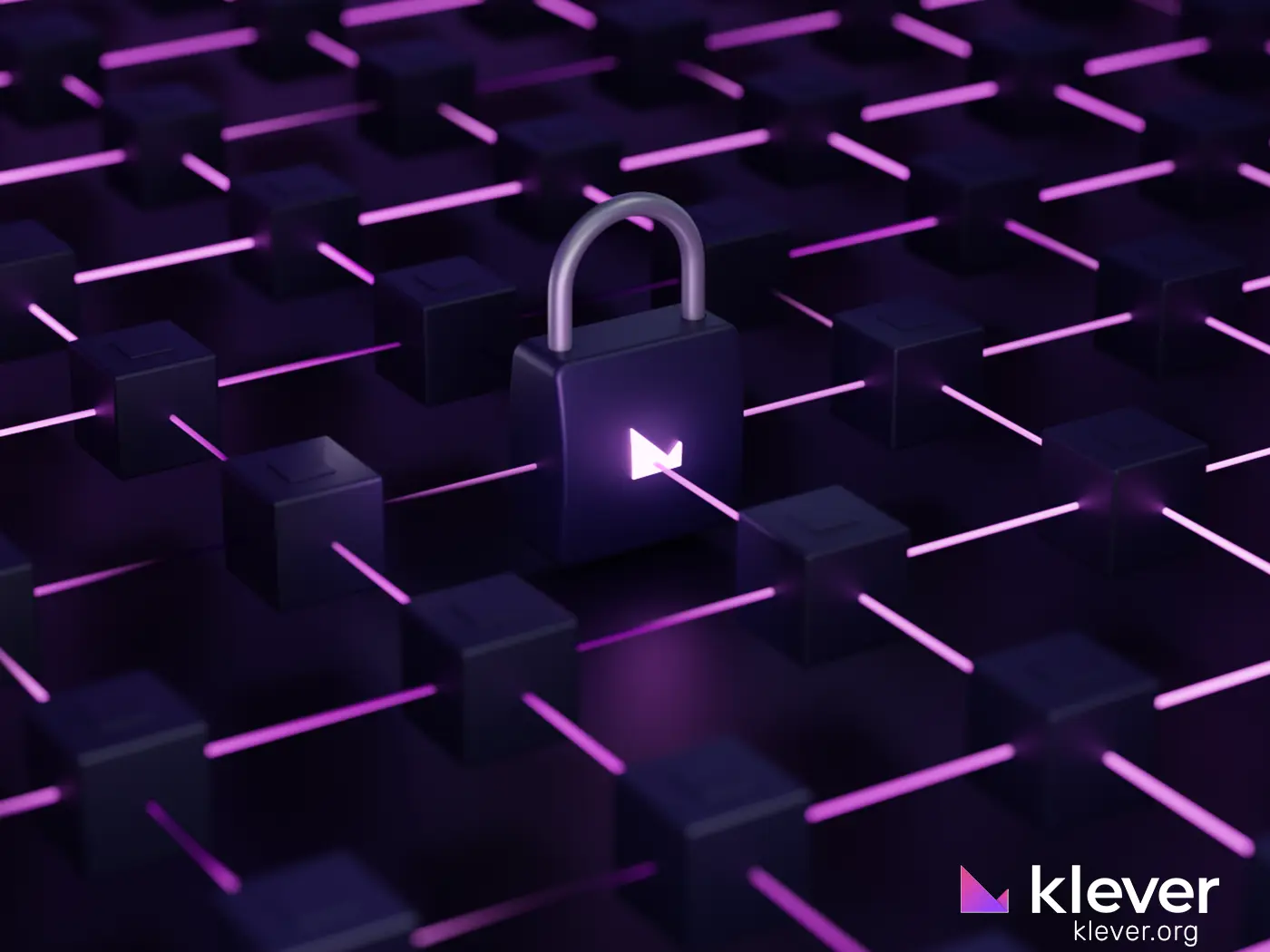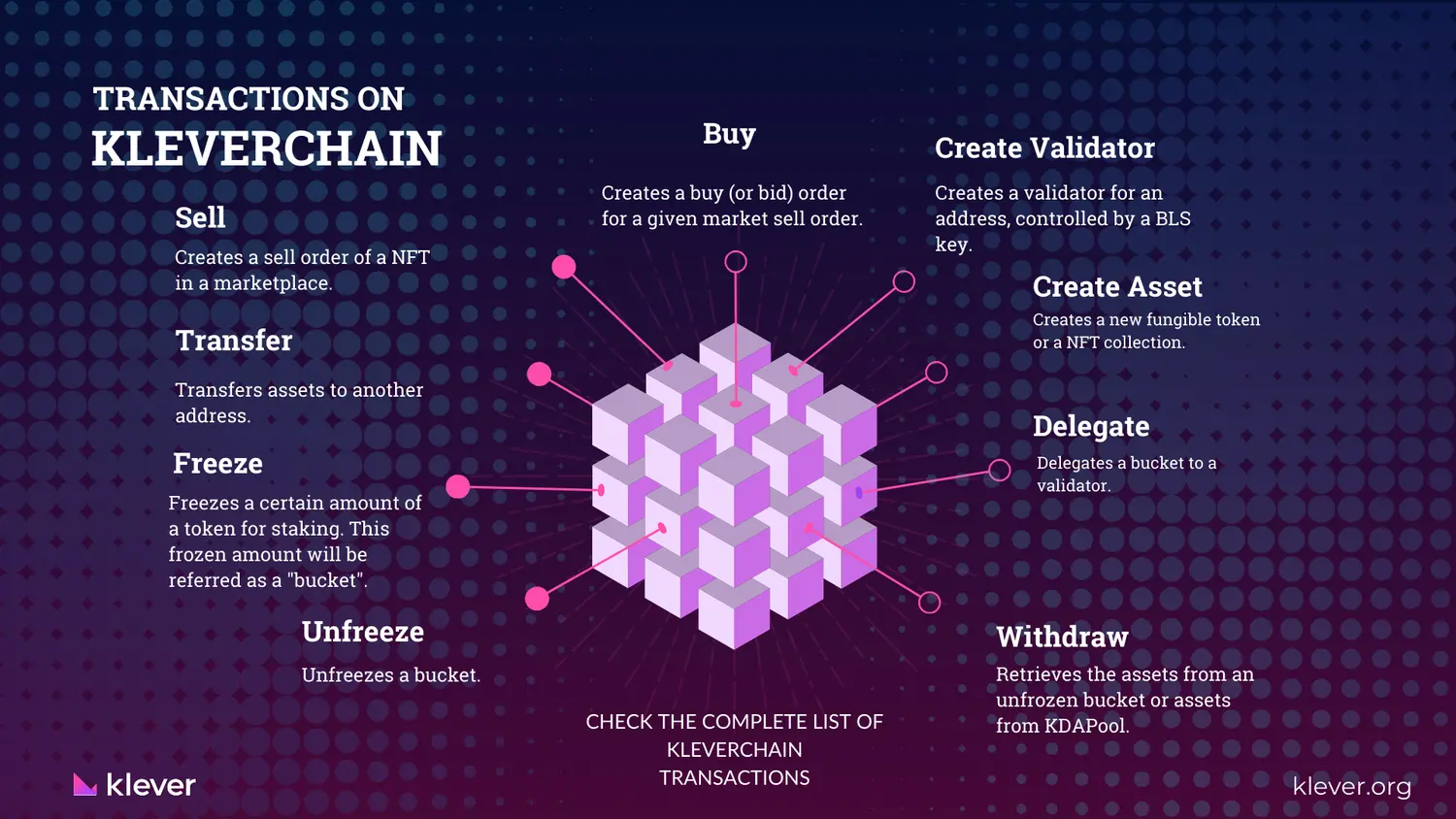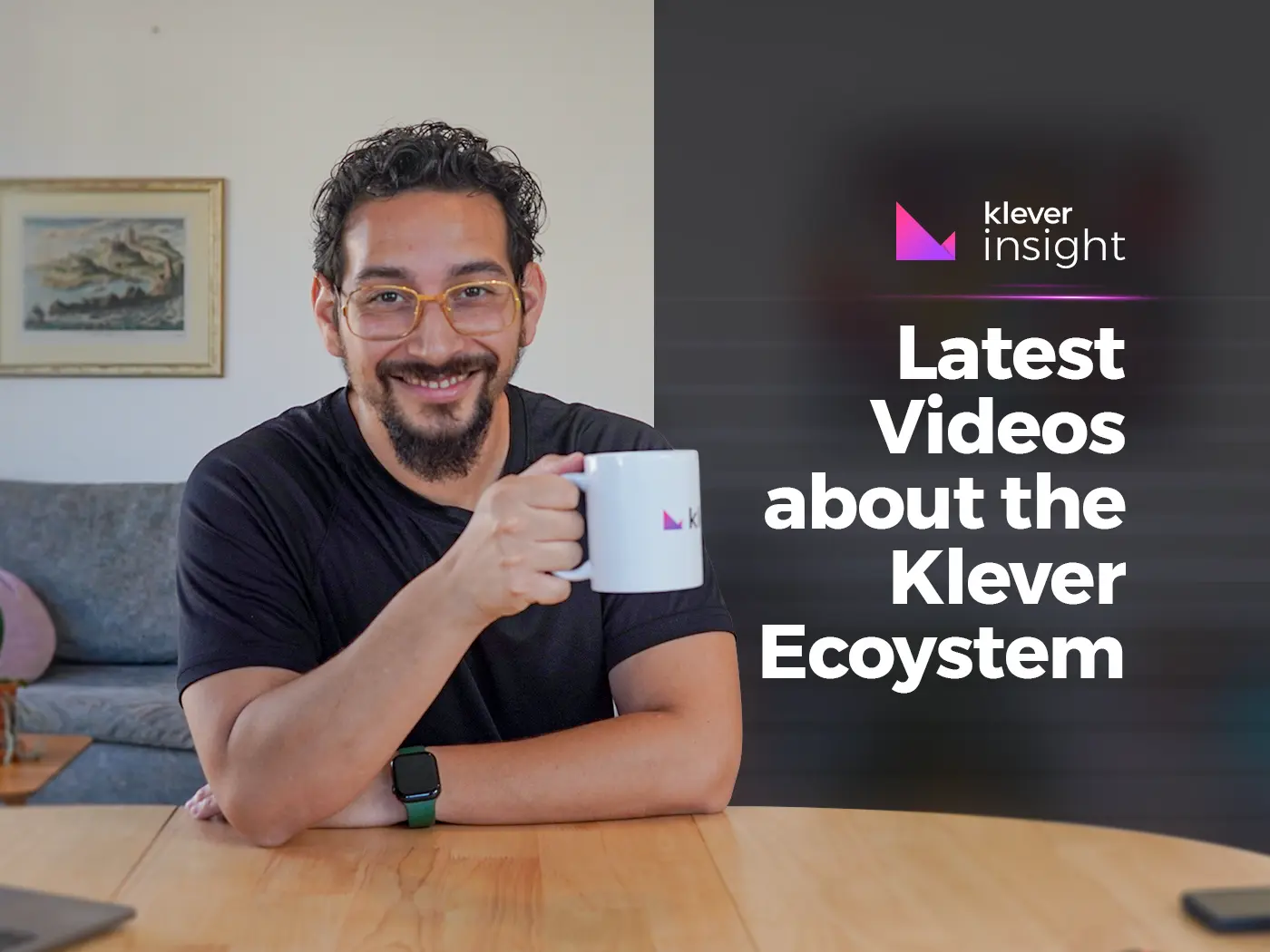
Blockchain transactions are the backbone of the blockchain ecosystem. They represent the exchange of value or information from one party to another, safety and transparently. These transactions are recorded on a decentralized ledger, ensuring that every participant in the network has access to the same information, thereby eliminating the need for intermediaries.
If you’re new to the concept of a blockchain platform, we recommend starting with our previous blog post: What is Blockchain? It provides a comprehensive overview of blockchain technology and its transformative potential.
Now, before we answer all your questions about it, let’s have a look at Klever Blockchain.
Firstly, Klever Blockchain is the low-code Blockchain platform built by Klever to empower people and businesses by simplifying technology features.
Secondly, Klever Blockchain supports a wide array of transaction types, each designed to facilitate different functionalities within the blockchain ecosystem

Check the complete list of transactions performed on Klever.
Upon examining the different transaction options offered by Klever, we can see that it provides a comprehensive suite of functionalities to cater to a wide range of needs in the ecosystem. Additionally, Klever Blockchain empowers users by providing tools for creating assets and validators, managing marketplaces, and conducting Initial Token Offerings, enabling full participation in the decentralized economy.
In order to provide thorough and accurate information about Blockchain Transactions, let’s address the 8 most frequently asked questions or concerns that users typically have.
So, let’s get started!
BLOCKCHAIN TRANSACTIONS (FAQs)

The Authentication Process
How authenticate blockchain transactions?
You can authenticate it using cryptographic keys. Each user has a pair of keys: a private key kept secret and a public key shared with the entire network. Therefore, users sign transactions with their private key, providing a digital signature unique to each user. The public key then verifies this signature, ensuring the transaction is authentic and hasn’t been tampered with.
The Authorization Process
How authorize blockchain transactions?
Consensus mechanisms achieve authorization in a blockchain. The most common of these are Proof of Work (PoW) and Proof of Stake (PoS). In PoW, participants known as miners solve complex mathematical problems to validate transactions and add them to the blockchain. PoS, on the other hand, selects validators based on the number of tokens they hold and are willing to ‘stake’ for the chance to validate transactions.
The Role of Mining in Blockchain Transactions
What role does mining play?
Mining plays a crucial role in validating and recording transactions on the blockchain. Miners use their computational power to solve complex mathematical problems and the first miner to solve the problem gets to add a new block of transactions to the blockchain. This process not only ensures the authenticity of transactions but also secures the network against fraudulent activities.
Transaction Fees in Blockchain
What are fees and how do you calculate them?
Transaction fees in blockchain are incentives for miners to include transactions in the blocks they mine. These fees vary depending on factors such as network congestion and transaction size. So, in some blockchains like Bitcoin, users can opt to pay higher fees for faster transaction confirmation.
Privacy and Security in Blockchain Transactions
How can I ensure the security and privacy?
Blockchain transactions are secure by design. The use of cryptographic keys ensures that only the owner of a private key can initiate a transaction. Once a transaction is recorded on the blockchain, it cannot be altered or deleted, providing a tamper-proof history of transaction. Some blockchains like Klever Blockchain also offer features like pseudonymity and encryption to further enhance privacy.
The Role of Public and Private Keys
What is the role of public and private keys in blockchain transactions?
Public and private keys are integral to the security and functionality of it. The private key is like a digital signature, providing proof of ownership and authorizing transactions. Others in the network use the public key to verify transactions and can share it freely without compromising security.
Transaction Confirmation and Time
How long does it take for the system confirm a blockchain transaction and is there a way to expedite this process?
Several factors, like the network’s congestion and the transaction fee paid, determine how long it takes to confirm a blockchain transaction. In congested networks, the system typically confirms transactions with higher fees faster. Some blockchains also offer mechanisms to expedite the confirmation process, but these often involve paying higher fees.
Handling Conflicting Transactions
How does a blockchain handle conflicting transactions?
Through its consensus mechanisms. In the event of a conflict, the version of the transaction history that the majority of the network agrees upon becomes the accepted truth. This ensures the blockchain will ultimately record only one version, even if conflicting transactions occur.
Blockchain Integration in Business Operations
How can businesses integrate blockchain technology into their existing operations for transaction processing?
Businesses can integrate blockchain technology into their operations in numerous ways, for example, to create transparent and efficient supply chains, enable secure and instantaneous cross-border payments, and provide immutable and verifiable records for compliance, among other applications. Also, the integration process often involves working with blockchain consultants or technology providers.
Blockchain transactions are a fundamental aspect of blockchain technology, enabling the secure and transparent exchange of value that has made it a revolutionary force in numerous industries. So, by understanding how these transactions work, we can better appreciate the transformative potential of blockchain and envision a future where transactions are secure, efficient, and trustless.
This concludes our exploration of it. As blockchain technology continues to evolve, so too will the ways in which we transact and interact with one another.
The future of transactions is here, and it’s built on Klever Blockchain.

Stay tuned on Klever Finance channel for more educational content.